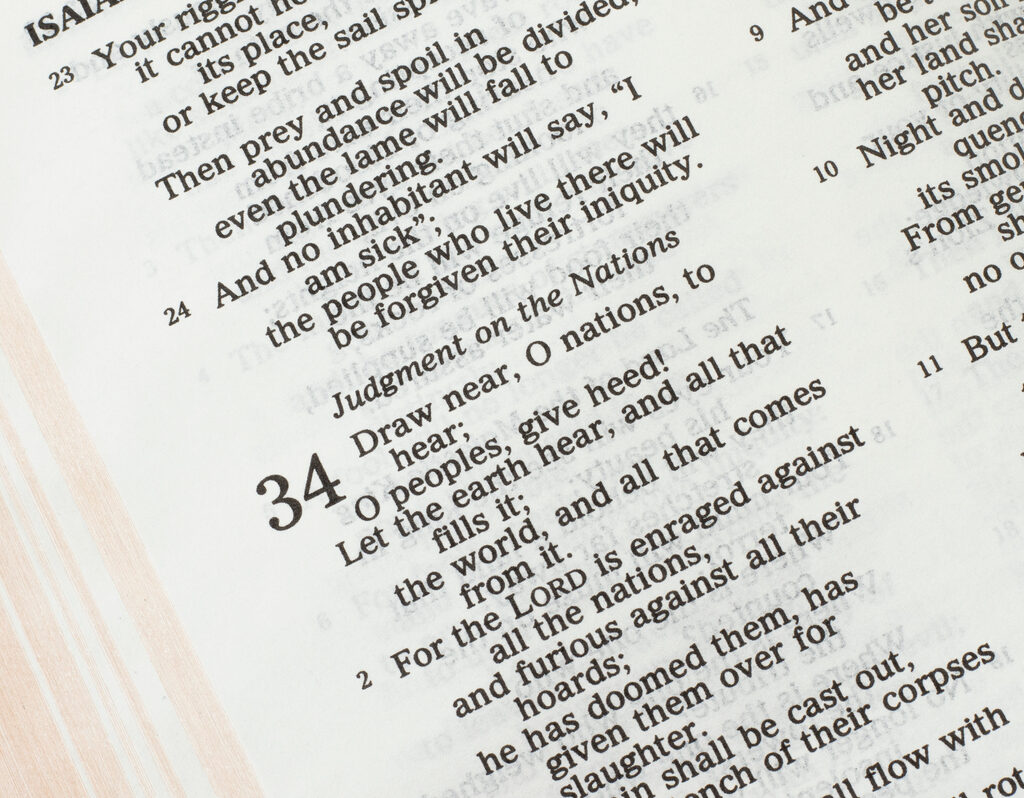Review: The End Times, Again? Martyn Whittock, Cascade Books
It’s ironic that over 2000 years of Christian history, the belief that the end of the world is imminent has been one of the most persistent. In the faith’s early history, it was arguably its dominant feature. Martyn Whittock, in his thorough book about this persistence, notes the importance of biblical prophecy and the amount of apocalyptic imagery (apocalyptic meaning ‘revelation’ but taken now to mean violent Armageddon), leading to constant speculation. Coded, symbolic language meant scope for endless interpretation, disappointment and re-interpretation.
Belief in an imminent end began before the Early Church – in Judaism through the writings of Daniel and Ezekiel where, like the Book of Revelation, we find massive battles, beasts with wings and numerous horns, earthquakes and darkness. Such imagery and its relevance drove the rebellion that ended in the destruction of Jerusalem in 70 AD.
Jesus seemed to believe the end of the world was imminent but cautioned against speculating. So did Augustine. But solving numerological puzzles proved irresistible for some, beyond 666 and sevens, as they have been for 2000 years, despite constant obvious failures, and exegesis that points to other, more sensible readings. Biblical scholars worth their salt tend towards seeing Revelation as referring, in veiled fashion, to Rome of the first century.
When Rome became hero rather than villain, under Constantine, more allegorical interpretation was necessary, but events like the fall of Rome prompted speculation the end was near (even if, Whittock says, this didn’t prompt as much apocalyptic hysteria as might be expected). So it goes, for millennia. Says Whittock, much ‘repeats itself in the history of the end times’. Around 1000 AD, Viking raids seemed apocalyptic, unsurprisingly due to the ferocity of the raids, and especially since, in relation to England, the Vikings came from the north, where the evil armies were supposed to come from, according to the Old Testament.
Around this time, exegetes began dating Christ’s return from his birth, rather than from the creation of the world as had previously been the case, leading to adoption of our historical BC/AD dating system. Over 2000 years, significant upcoming dates have been squeezed into convoluted symbolic frames – 1000, 1033, 1666, and so on.
Crusaders drew on apocalyptic imagery, and Islam became the new Antichrist. But alternatively, Pope Innocent III and the emperor both accused each other. During the Reformation, the pope and Thomas Muntzer, the leader of the Peasants’ Revolt, accused Martin Luther of being the Antichrist, and the new technology of printing, as well as spreading Scripture, allowed the spread of outrageous Lutheran woodcut images of the pope as Antichrist (or the Whore of Babylon), even while Luther was famously impatient with Revelation – he couldn’t make head or tail of it.
At Munster (not to be confused with Muntzer) Anabaptist leaders created a community anticipating the last days, which soon turned hellish. Leaders proclaimed themselves Messiah, took multiple wives and executed anyone who raised an objection.
The English Civil War saw much apocalyptic interpretation, since, infamously, the world seemed suddenly upside-down. American pilgrims fled but their worries about end times travelled with them. They saw themselves as a new Israel, and later Jonathan Edwards saw America as a site of apocalypse (in its original, positive sense), as a place of revival that would usher in the millennia before Christ’s return. The destiny of America was tied to biblically prophesied revival and exceptionalism, a thread, Whittock notes, that has remained through all the subsequent twists of American history. During the American Revolution King George was labelled the Great Whore of Babylon, not by hyperbolic politicians but by ministers.
By the nineteenth century all manner of sects and cults went down the apocalyptic route, reading the signs and the Scriptures, ridding themselves of possessions and sitting on hilltops in anticipation. The early Seventh Day Adventists thought worship on Sunday, rather than on the Sabbath, was the mark of the beast. The Bible has an amazing capacity to be interpreted anew to fit the times. And, indeed, the message of Revelation is universal. In every age, there are worldly powers arrayed against the need to do good, but not in the way most conservative evangelicals think of it.
After World War II, there were more mainstream fears, with nuclear powers able to realise apocalyptic scenes. Whittock also notes a rightwards turn, as apocalypse moved from the domain of a subversive group of misfits to dominating conservative theology and politics in the most powerful nation on Earth. And the geographic significance of the Middle East came back with the creation of the state of Israel. Whittock notes the importance of Israel to American evangelical end times enthusiasts. Yet, he says, when it comes to Israel’s place, as well as dating and identifying the Antichrist, literalists often contort themselves in ways they would criticise in non-fundamentalists. They also seem to be wilfully blind to a past littered with unfulfilled apocalyptic speculations.
In modern times, apocalyptic imagery has fuelled heavy metal bands and video games. (As Dante found with his portrayal of the afterlife, the darker aspects of the end times lend themselves better to artistic drama than the positive bits.) But its more insidious and wider reaching effects have been seen on the other side. The eye-watering success of the Left Behind series of fantasy fiction books has been heavily responsible for current evangelical interpretation, including what Whittock thinks is the dubious, non-Scriptural belief in the Rapture. The books show how it is often not Scripture itself but creative, selective and politically compromised interpretation of it that prevails, in often unhelpful ways. Whittock notes that American conservatives show a dangerous ‘acquiescence’, which can lead to an enthusiasm for signs of deterioration, rejection of environmentalist activism, vaccinations, gun control and other socially worthwhile efforts, and support of warmongers.
The internet doesn’t help either, allowing the proliferation of conspiracy theory-style prophecies and half-baked exegesis, and fuelling survivalists and right-wing insurrectionists. This is not restricted to the United States. Nowadays, it’s always the end of the world somewhere.
Nick Mattiske blogs on books at coburgreviewofbooks.wordpress.com and is the illustrator of Thoughts That Feel So Big.














3 thoughts on “It’s always the end of the world somewhere”
For many years I have felt that the next big round of predictions of the End Times would obviously be the 2000 year anniversary of the crucifiction of Jesus, which is fast approaching. I have been surprised that I have not heard of anyone making this prediction. Or, if someone is, they are terrible publicists. The fact that there is approximitely a four year year window for the agreed upon date of his death due to which determination you choose for the actual year of his birth gives any predictors some wiggle room when things don’t transpire as predicted.
Thanks for your comments, JB.
I suspect that whereas the Byzantine and medieval churches focussed on the years, American evangelicals inclined to this sort of thing focus more on the signs – who possibly could be the Antichrist, what the mark of the beast is, what the army from the north is, whether current tribulations correlate to those described in Revelation, etc.
Nick,
I completely agree with your dicohtomy between Mid-classical/post Augustine focus on years versus USA evangelicals who are obsessed with signs (which is so apparent right now with reactions to climate change related numbers/effects now globally).
My observation was that, I have been surprised that nobody, anywhere (that I know of) has latched onto the anniversary of the crucifixtion as a significant time stamp for an end times prediction.
It should be noted that the coming of the 2nd millienia did not deter some/many USA evangelicals from predicting the end times approach.
As an aside, I have also noted many times in the past, that it is not-so-curious that most of the strongest predictioners proclaiming the coming of the rapture are white men who are quite close in age to dying. They say it will happen in their lifetime (fervently). Which is, of course, what Jesus’s followers believed at the time of the cruxifiction.